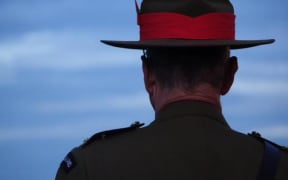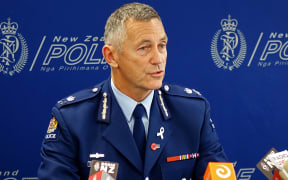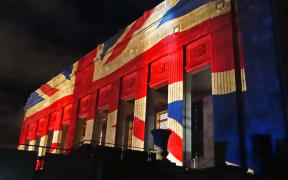Services around the country have been held to mark 100 years since the Gallipoli campaign, with tens of thousands turning out to remember those who died far from home.
About two thousand people attended the Ceremony of Beating Retreat in Wellington this evening, marking the end of the official Anzac Day commemorations.
The service took place at the Pukeahu National War Memorial.
In wartime, the Beating Retreat signified the end of the day's fighting, when both sides would collect their dead and wounded and return to camp.
This evening's event was led by the Royal Gurkha Rifles, followed the the New Zealand Air Force band.
A firing party dressed in replica First World War uniforms then let off a three-volley salute.
The ceremony concluded with the Last Post.
Catch up with Radio New Zealand's live online coverage of Anzac Day services
Photo collections
Getting there Photos of New Zealand troops, from their days as Military Cadets, on their journey to Egypt and the landing at Gallipoli.
Being there The hills and valleys around Anzac Cove were an inhospitable environment, the land harsh and rugged, and war imposed its own mark.
Faces of Gallipoli The men and women of WW1 look back at us after a century, so we can remember them.
Our Anzac audio collections
The day began with Wellington's dawn service at Pukeahu, followed by a National Commemoration service and a wreath laying ceremony near the Cenotaph at parliament.
The Department of Culture and Heritage estimated 40,000 people attended this morning's services at the newly-opened Pukeahu National War Memorial.
And about 1,000 people, many of them Turkish, commemorated Anzac Day at the Ataturk Memorial Park in Wellington this afternoon.
The Auckland Council said the city had its most widely attended dawn service ever, with an estimated 34,000 people.
Normally about 10,000 people go.
The organisers of Christchurch's service said more than 10,000 people flocked to the commemoration in Cranmer Square.
And Dunedin also saw a record turnout for Anzac Day services - an estimated 18,000 people.
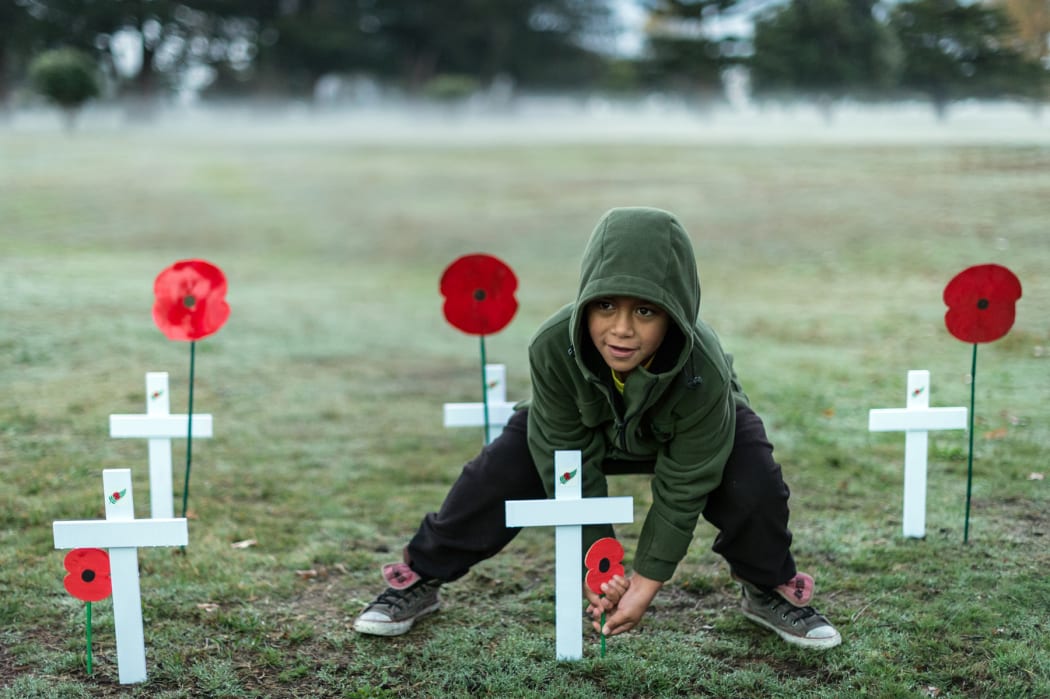
Children around the country were involved in the services. Photo: NZDF
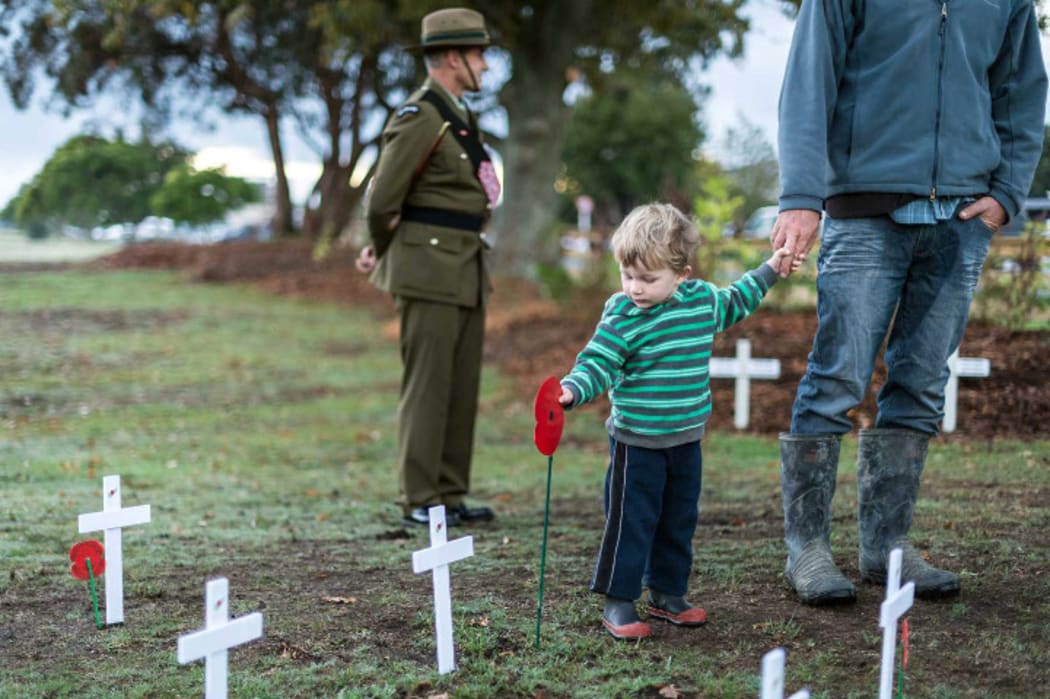
A child places a poppy at Tolaga Bay, near Gisborne. Photo: NZDF
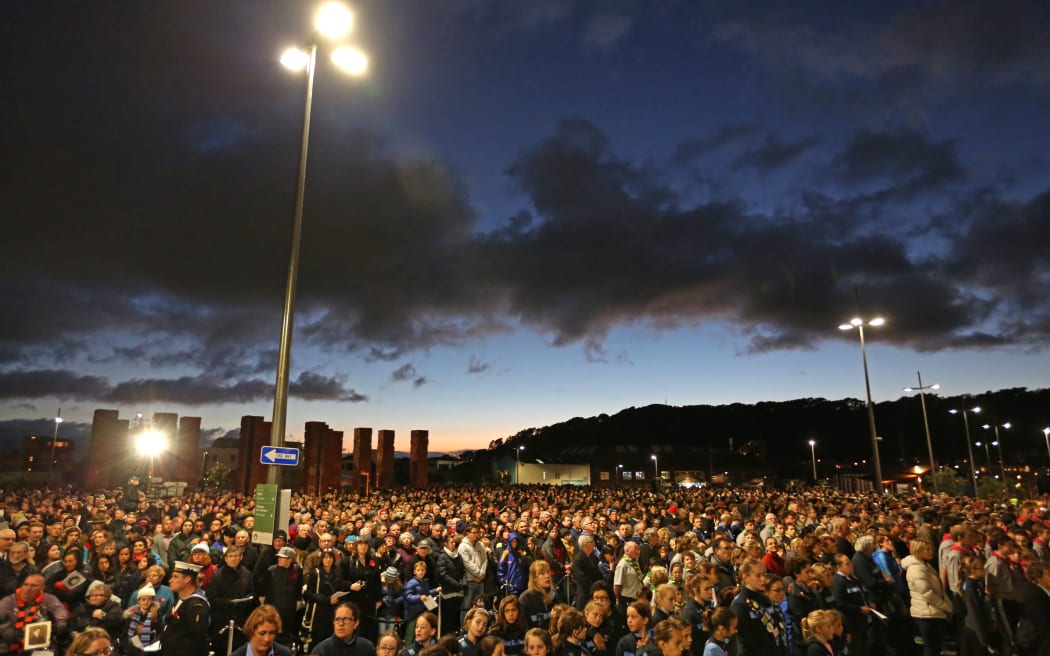
It is estimated that up to 20,000 people attended the service at the Pukeahu National War Memorial. Photo: RNZ / Alexander Robertson
Commemorations in the capital
The civic service in Wellington was open to all members of the public to lay a wreath. Among those in the formal ceremony who laid wreaths were members of the Returned and Services Association, veterans, schools, and individuals. At the end of the service, an invitation was extended for anyone else to lay their own wreath.
Wellington's mayor, Celia Wade-Brown, said it was about the people of Wellington - both now, and in the past.
"It's a very personal wreath-laying from a whole lot of different groups," Mayor Wade-Brown said.
Manisha Mora from the Wellington Indian Association was there to represent the only Indian Anzac who went to Gallipoli.
"I'm really proud to be representing him because he died 1954, and he's very much a forgotten soldier. He was part of the Wellington Mounted Rifles, and so we're really proud that he was actually a Wellingtonian," she said.
Ms Mora said he fought in three campaigns, and after he was severely injured at Chunuk Bair he spent the remainder of his time entertaining soldiers in hospital.
Gurtej Singh of the Wellington Sikh Society said he was there as he felt it was his duty as a New Zealand citizen.
"Even as Sikhs, we are associated with Gallipoli, Anzacs," Mr Singh said.
He said just last month they discovered that there were three Sikhs from Trentham, Wellington who had fought for the Anzac forces in the First World War.
Mr Singh said the society hoped to find out more about those three soldiers and to see if they had any relatives in New Zealand.
Louise Malone is the Great-Granddaughter of Lt Col William George Malone, who led the Wellington Batallion at Gallipoli.
She said it was astounding to see how the centenary resonated with the young people of today.
"It's amazing that it's endured in everyone's minds so vividly, I think," she said. "It is personal for me - you know it's a sad family story, a very personal story about what he did and how he died at Gallipoli. But it does also have this public aspect that it's an important part of the nation's history, so it's an honour, really an honour, that people remember him so well."
She said the Anzac spirit shone brightly on days such as these.
"I have a sense of the characteristics that we held to be good characteristics for people and what it means to be brave. Those sorts of characteristics are part of the spirit of New Zealanders and Australians today, and you feel it really coming out on a day like this, at these events."
'Pluck and courage'
Lieutenant General Sir Jerry Mataparae invited those gathered and those watching to cast their minds back a century ago, when months of preparation were about to be tested.
For some it was their first taste of war, for others their last, he said.
Sir Jerry said an artillery sergeant at Gallipoli, Frank Cooper, had noted the New Zealanders' pluck and courage under fire with just bayonets - a sight bad enough to witness let alone to be amongst.
He said Australia and New Zealand were both changed by the Gallipoli landings.
"This is our day to pause and reflect - to honour and to remember all those who have served their country in all wars and in particular those who have lost their lives in executing that duty."
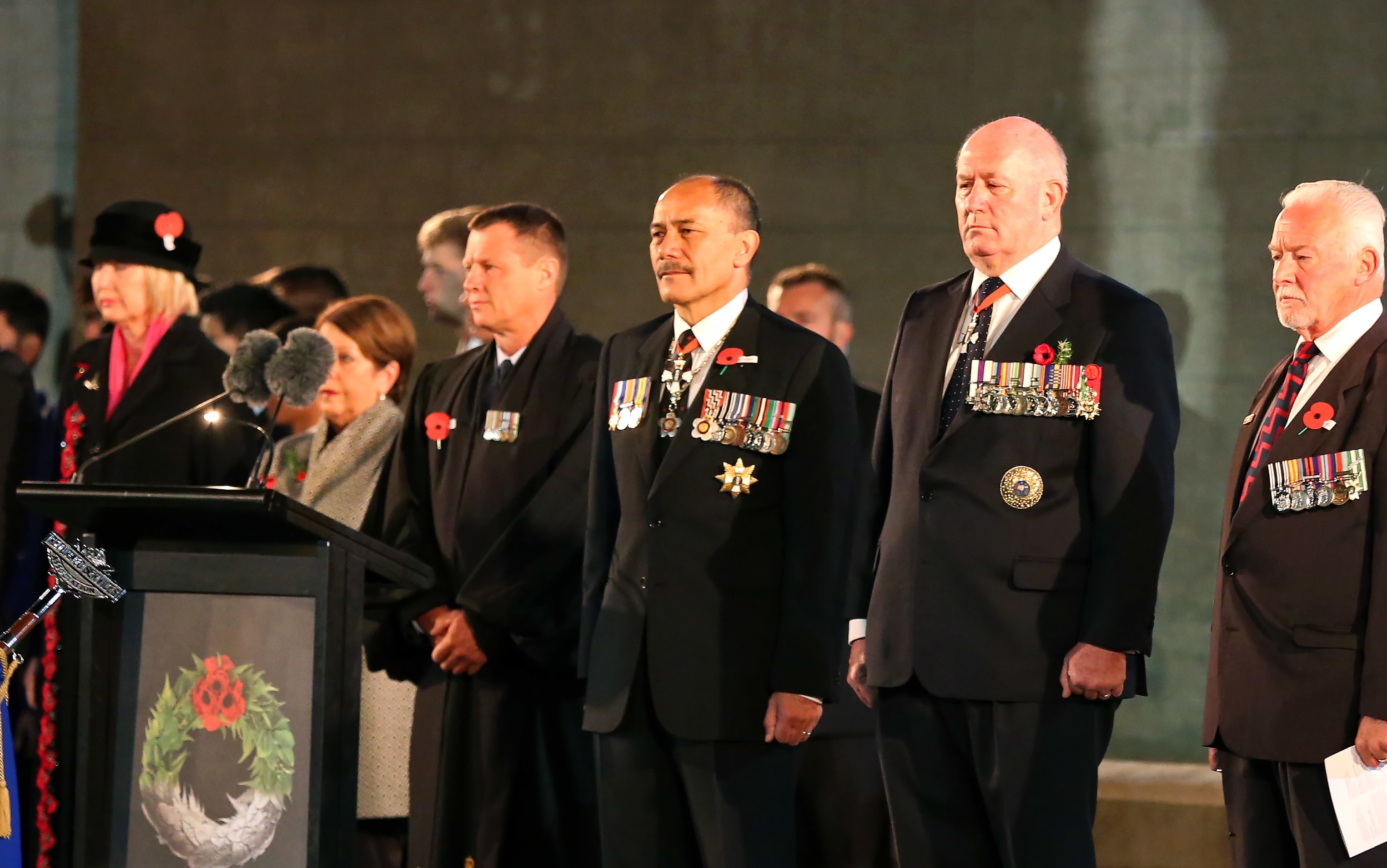
Lieutenant General Sir Jerry Mataparae (centre) at the Pukeahu National War Memorial. Photo: RNZ / Alexander Robertson
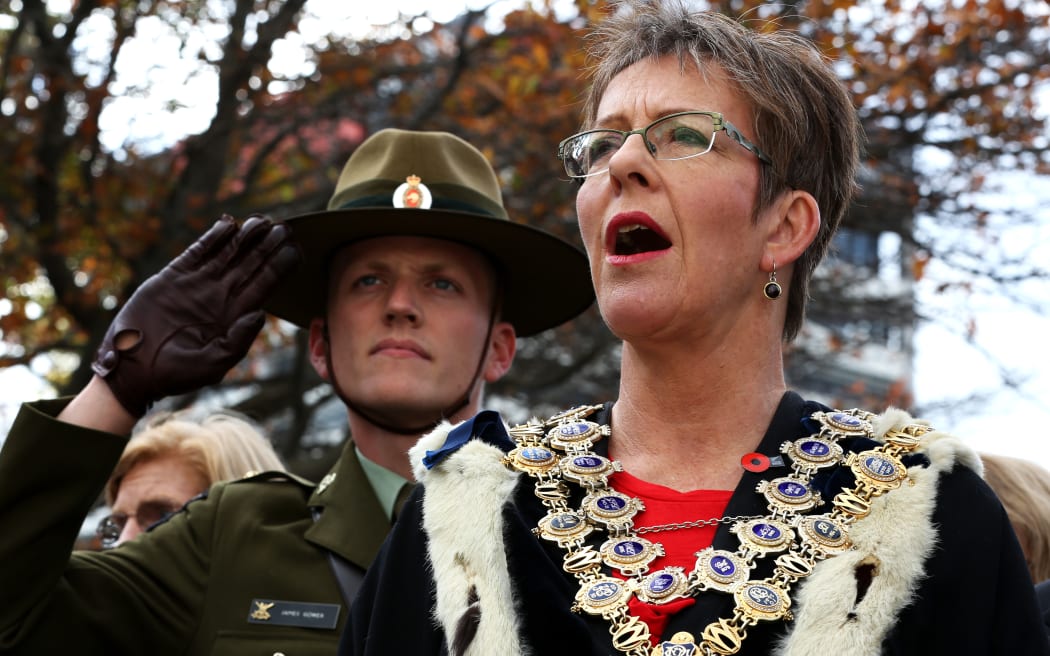
Wellington Mayor Celia Wade-Brown pays her respects. Photo: RNZ / Alexander Robertson
Sir Jerry said the Anzac spirit was exemplified by courage, compassion and mateship in the face of adversity.
"As the sun rises here, we remember our brave men and women. When the sun sets in Canberra this evening, we will remember them, and we will affirm the strength of the bonds forged in Gallipoli."
In the midst of the horrors of war, moments of astonishing humanity occur and it is those human connections that are being commemorated today, he said.
Australian Governor-General Sir Peter Cosgrove said those who fought were ordinary people who showed incredible valour and experienced the horror of war.
Sir Peter said they had become Anzacs, the proudest of terms and the mightiest of labels.
A wreath was laid at the Cenotaph near Parliament at 9am.
At the National Commemoration Service held from 11am at Pukeahu, Sir Jerry told the service that those who fought at Gallipoli showed incredible valour and earned the name ANZACS, the proudest of terms and the mightiest of labels.
He told the story of an Australian, Private Bill Gilby and a New Zealander, Private Clary Nichol, who met on the island of Crete in 1941, on the run from prisoner of war camps.
Private Nichol collapsed and instead of leaving him, Private Gilby carried him 13 kilometres to a village where German troops were stationed, knowing they'd have to give themselves up.
"Private Gilby stayed with his mate until his death, two days later. As he fully expected, Private Gilby spent the rest of the war in a Prisoner of War camp. After the war he kept a promise to Private Nichol, to go to New Zealand and return a photograph of his girlfriend to her."
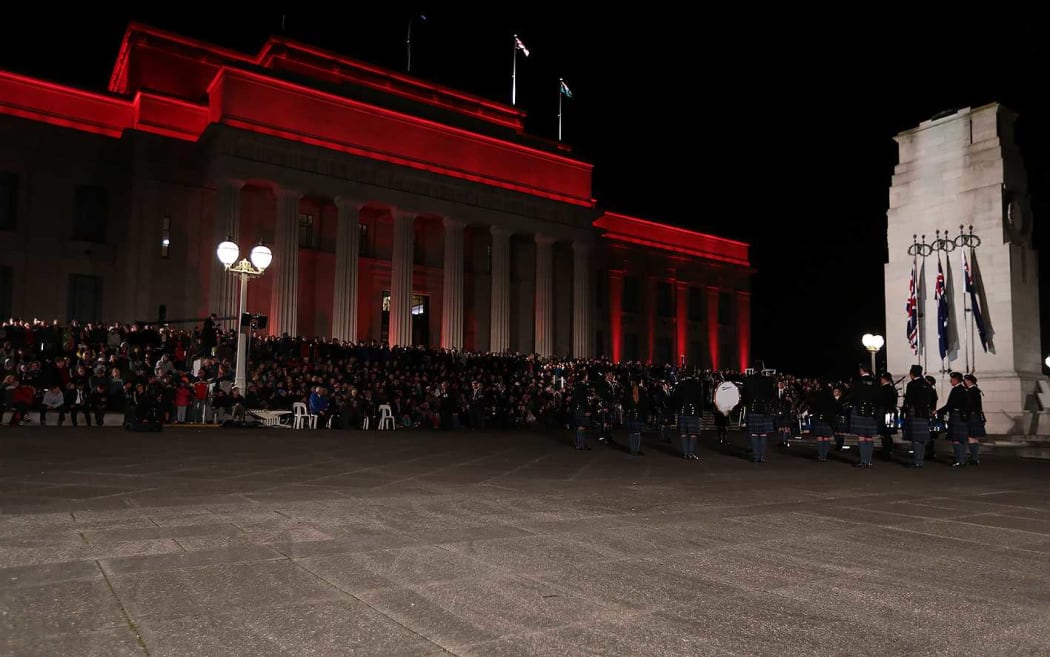
Crowds gather at the Cenotaph in Auckland. Photo: RNZ / Diego Opatowski
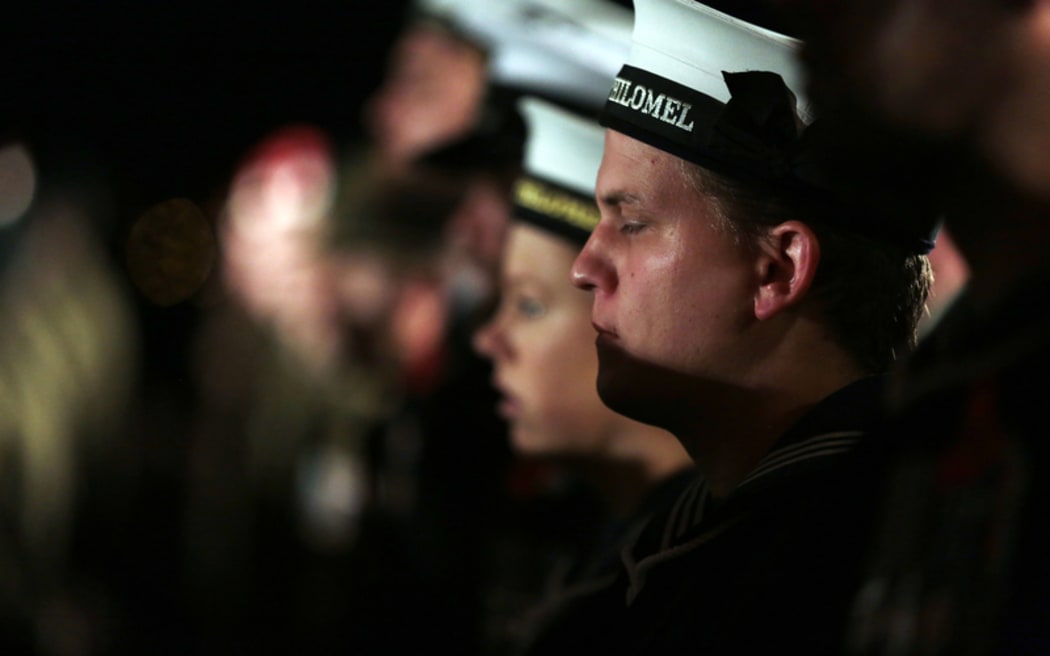
Soldiers pay their respects at the Auckland War Museum. Photo: RNZ / Diego Opatowski
'We were such a young and isolated country'
The Auckland ceremony started at 6am at the Court of Honour Cenotaph, followed by a civic service at 11am.
Auckland Mayor Len Brown told the crowd at the Auckland Domain that Gallipoli was a brutal introduction to the realities of modern warfare for this young nation.
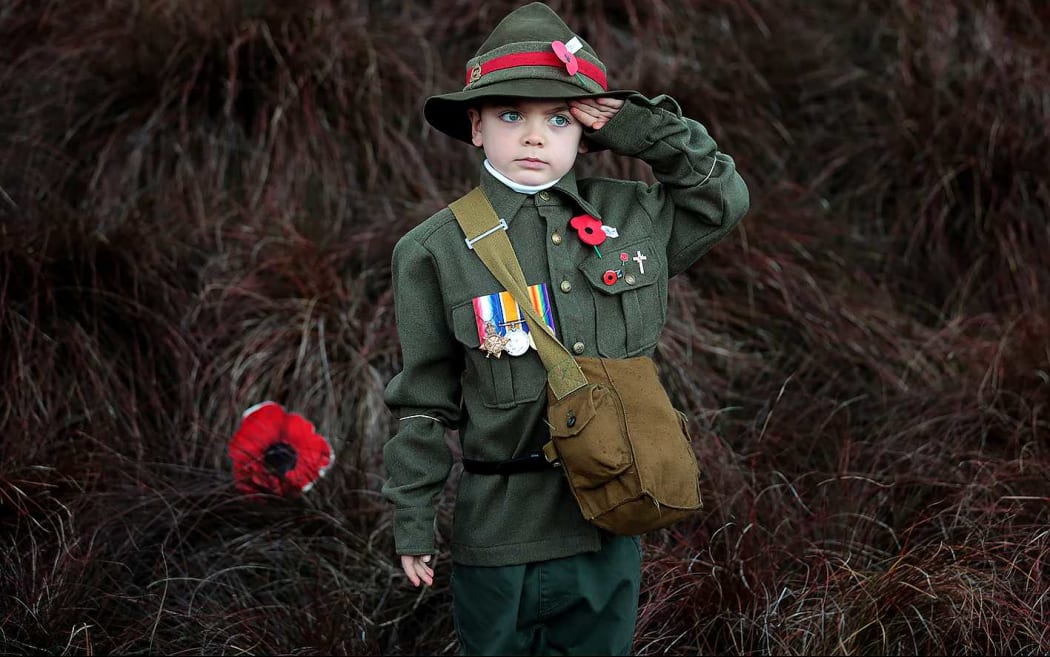
A boy called James salutes during the dawn service at Auckland Domain. Photo: RNZ / Diego Opatowski
He said one in 10 New Zealanders went to the First World War, and barely a family would have been unaffected once the telegrams and casualties and letters from the front began arriving.
Mr Brown urged people to remember not just the individuals but the families who lost them and the fledgling community from which they came.
"We remember the 13,000 New Zealand soldiers who took part in the gruelling eight-month Gallipoli campaign and the 2779 who lost their lives during that campaign," he said.
"We were such a young and isolated country."
The Auckland Council and Museum a record-breaking 34,000 people attended this morning's dawn service - far more than the 25,000 the council had expected.
Usually 10,000 to 15,000 people attend.

A boy in the crowd at the Auckland Domain for the dawn service. Photo: RNZ / Diego Opatowski

Auckland Mayor Len Brown. Photo: RNZ / Diego Opatowski
'A way of saying thank you'
School children took a central role in the ANZAC service at St Stephens Church in the remote Hawke's Bay settlement of Elsthorpe.
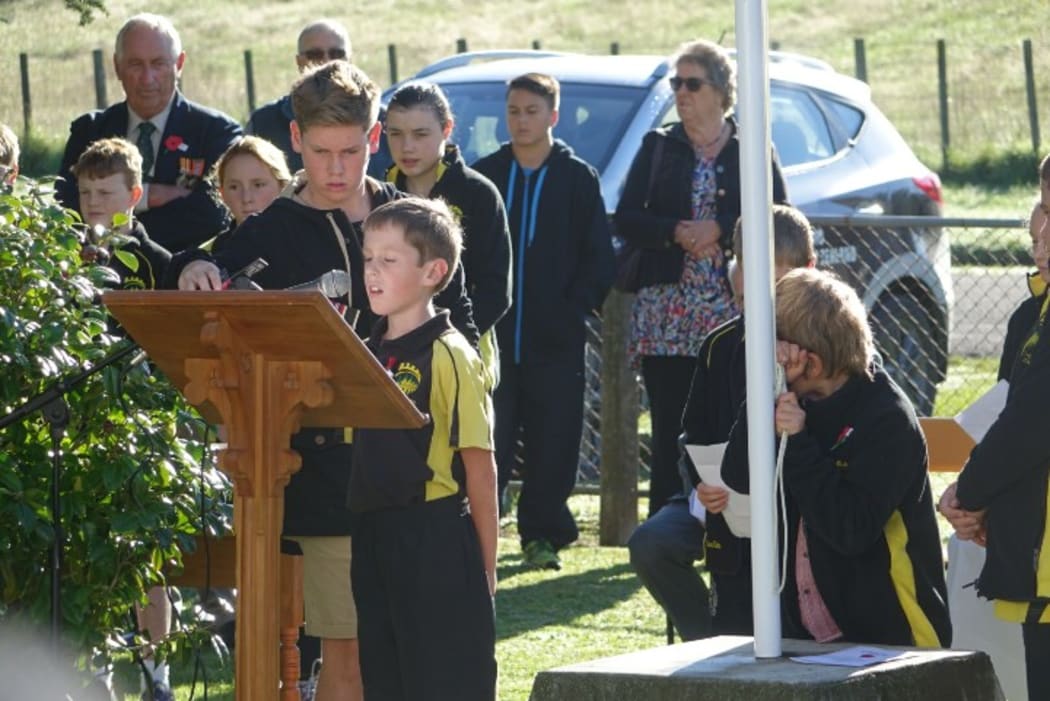
Children at the Elsthorpe service. Photo: RNZ
More than 200 people from the district turned up for the service, where children from Elsthorpe School read the poem 'The Poppy' by Paul Hunter.
I am a simple poppy,/A Reminder to you all,/That courage, faith and honour,/Will stand where heroes fall.
One of the speakers, retired Lieutenant Colonel Terry Brown, said small ANZAC services in the rural heartland were important because that's where many of the soldiers who fought and died in war came from.
He said it was his first rural ANZAC service, and he found it a much more personal experience.
Mr Brown said there are probably few communities in New Zealand that have not been affected by losses in war, and that Elsthorpe is typical, with losses ranging from the First World War and the Second World War to the Vietnam war.
Commemorations in the South Island
In Waikari in north Canterbury, 100 horses and riders marched into the town to mark the centenary of Gallipoli, and to commemorate the 300 members of the Canterbury Mounted Rifles.
One rider, 95-year-old John O'Carroll, said one of his uncles served in the First World War and it was important to mark the day.
More than 10,000 people are estimated to have attended the dawn service at Cranmer Square in Christchurch.
One of them, Joanne-Marie Knudson, said the more she learns about Anzac Day history, the sadder she feels.
"We've done some family history and learned that my husband's got some soldiers that for the Boer War and WWI and WWII," she said.
"I think it's important for all New Zealanders to understand the horror of war, really, and to be at days like this to commemorate."
Another, James Buchanan, said today makes him appreciate how lucky he was to be alive, with 60 or so years ahead of him if all went well.
"Incredibly privileged ... We're got a lot of issues in the world at the moment but I guess where we're at as a people helps us to deal with situations that don't include war."
In North Canterbury, a 100-horse cavalcade was expected to make its way from the dawn service at Peaks Hall to the 11am service at Waikari.
The cavalcade commemorates the Canterbury Mounted Rifles Regiment and their horses.
The first 52 riders in the group are dressed in military uniform to mark the servicemen from the area who died in the First and Second World Wars.
The cavalcade was expected to make the 20 kilometre trek with a police escort, joined closer to Waikari by a pipe band, the Red Cross and foot soldiers.
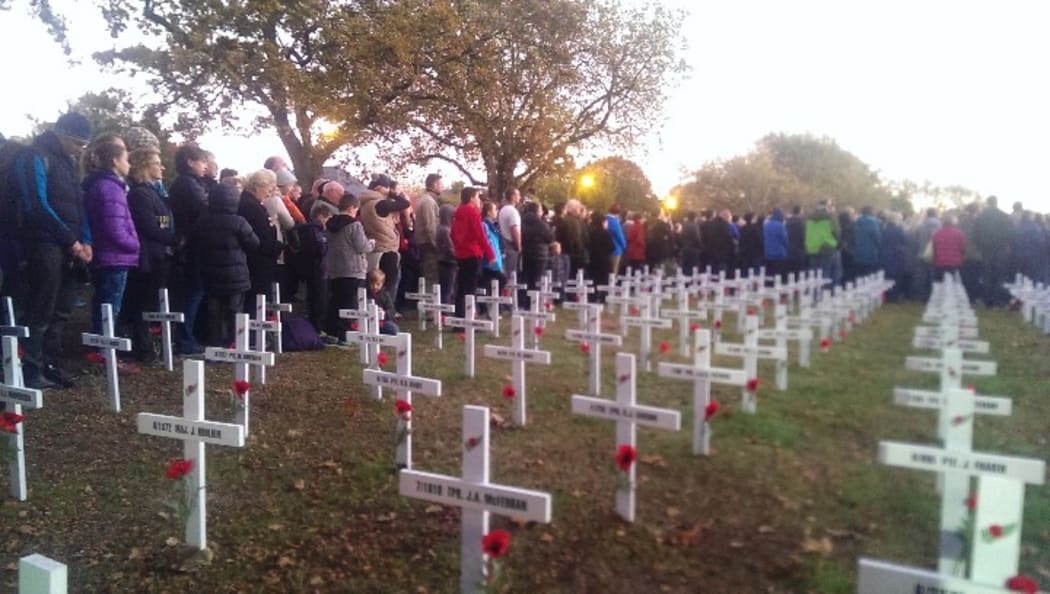
A tribute of crosses at Cranmer Square, Christchurch. Photo: RNZ / Belinda McCammon
Organisers of the dawn service in Dunedin said a crowd of at least 18,000 people attended - likely the largest Anzac Day service ever held in the city.
A pipe band led veterans and armed forces service personnel to the Queen's Gardens Cenotaph for a traditional service, including hymns and the Last Post but also the national anthems of New Zealand, Australia and Turkey.
Dunedin RSA president Lox Kellas said the service was particularly poignant given the centenary and he was pleased so many people took part in remembering it.
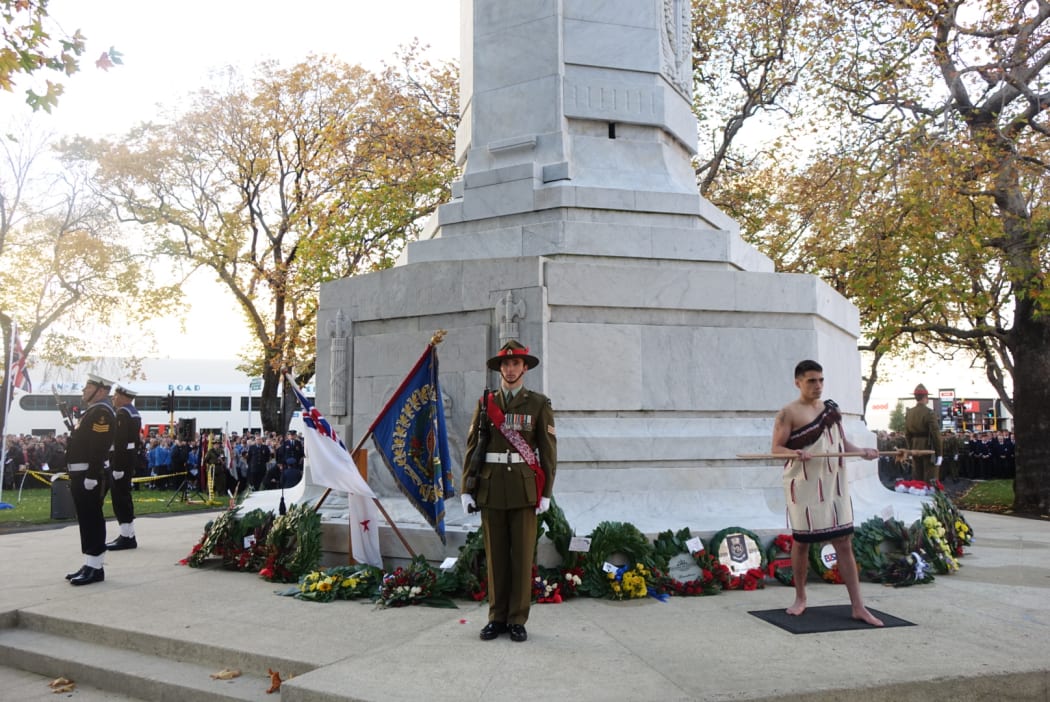
An estimated 10,000 people attended a service at the Queen's Gardens Cenotaph in Dunedin. Photo: RNZ / Ian Telfer
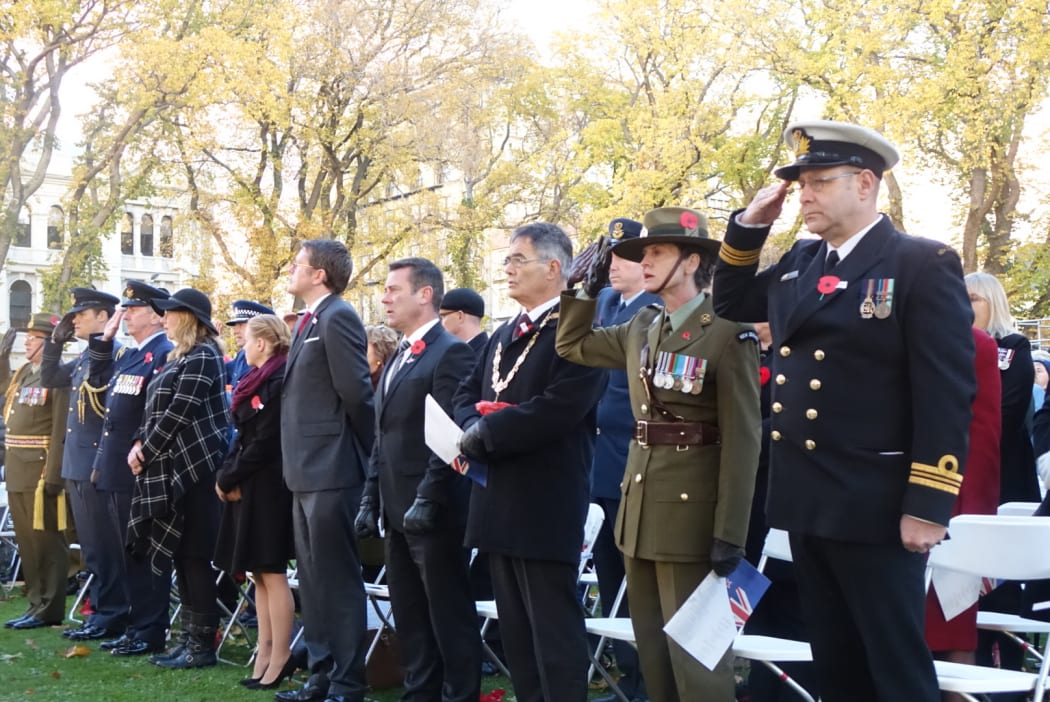
Guests salute to remember the fallen at the service in Dunedin. Photo: RNZ / Ian Telfer
No dawn service in Antarctica
There was no dawn service at Scott Base this morning - because Antarctica had its last sunset yesterday afternoon and the sun now will not rise again until late August.
Instead, the 19 New Zealanders at the base marked the occasion with 30 staff from the American McMurdo station at 10am.
The service took place outdoors, at a temperature of about minus 12 degrees.
The last post was broadcast over the base's PA system and the New Zealand flag in front of the base was lowered to half-mast.
David Rowe, a builder working on the Hillary Field Centre refurbishment, said his family had a military connection with Anzac Cove.
"My great-grandfather was a sergeant major and he died at Gallipoli on 27 April, 100 years ago."
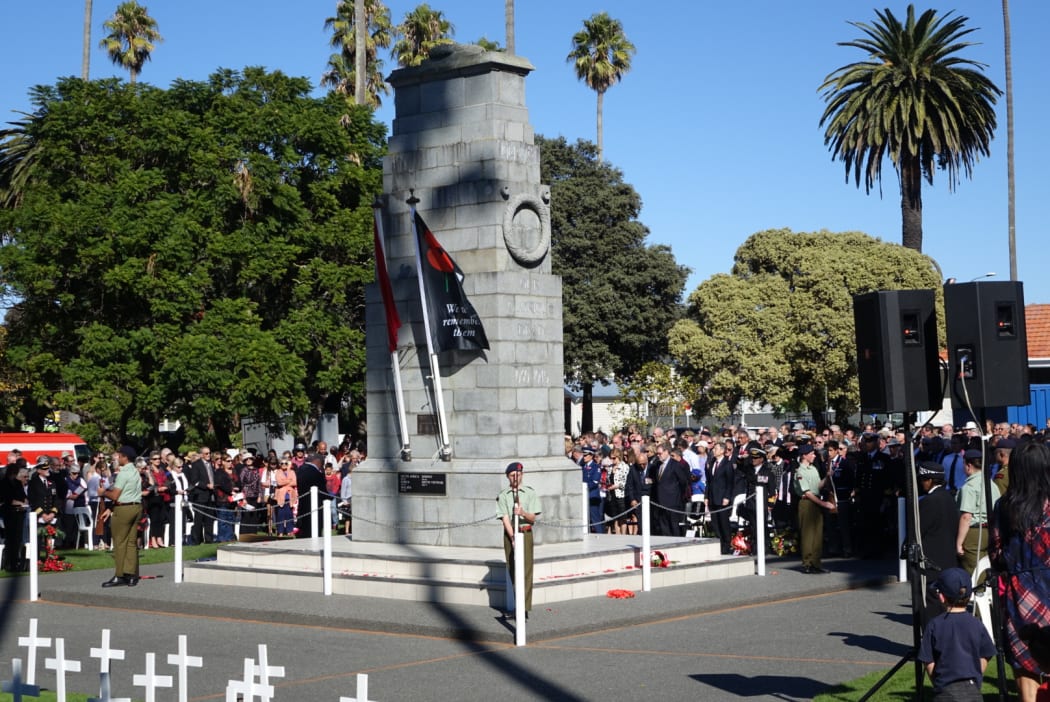
Crowds gather for an Anzac Day memorial service in Napier. Photo: RNZ / Peter Fowler
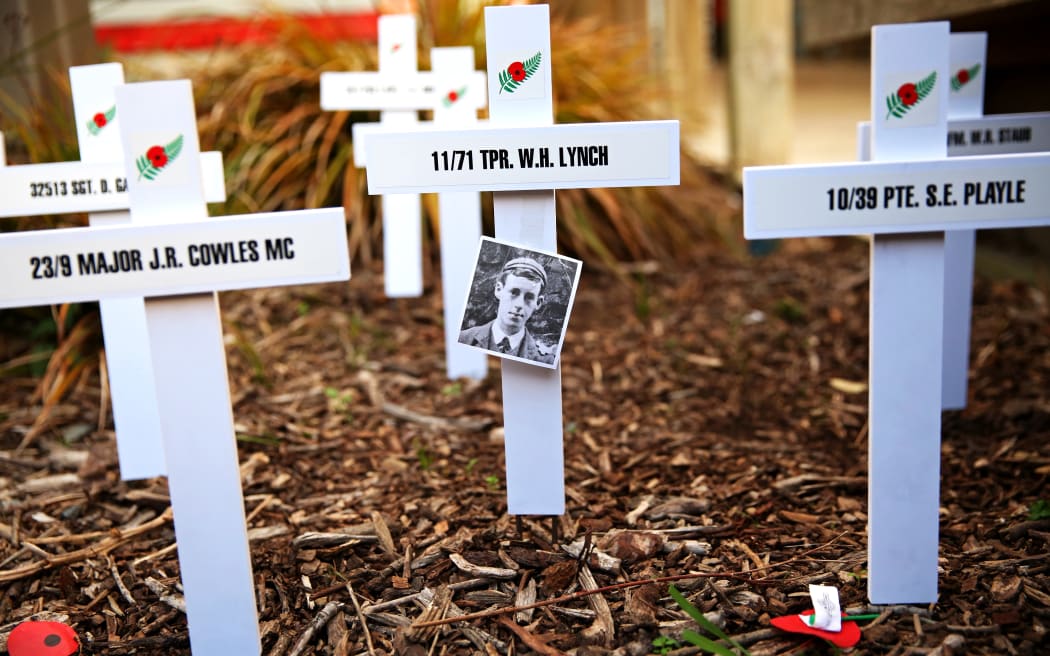
Crosses in a garden in Wellington pay tribute to those who died in WWI. Photo: RNZ / Alexander Robertson
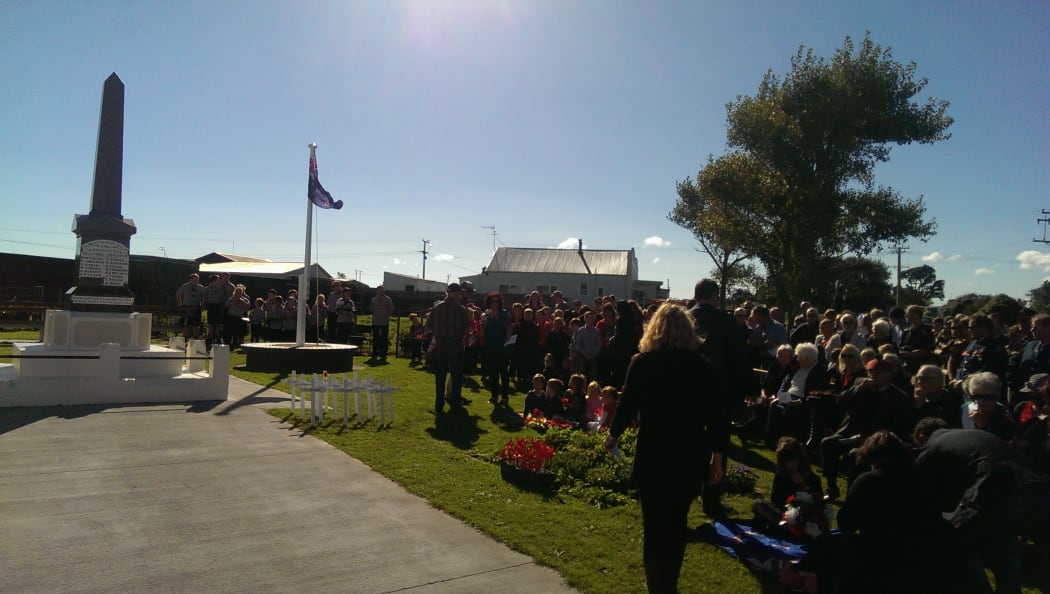
More than 200 people have gathered at Alton in South Taranaki for Anzac comemorations. Photo: RNZ / Robin Martin
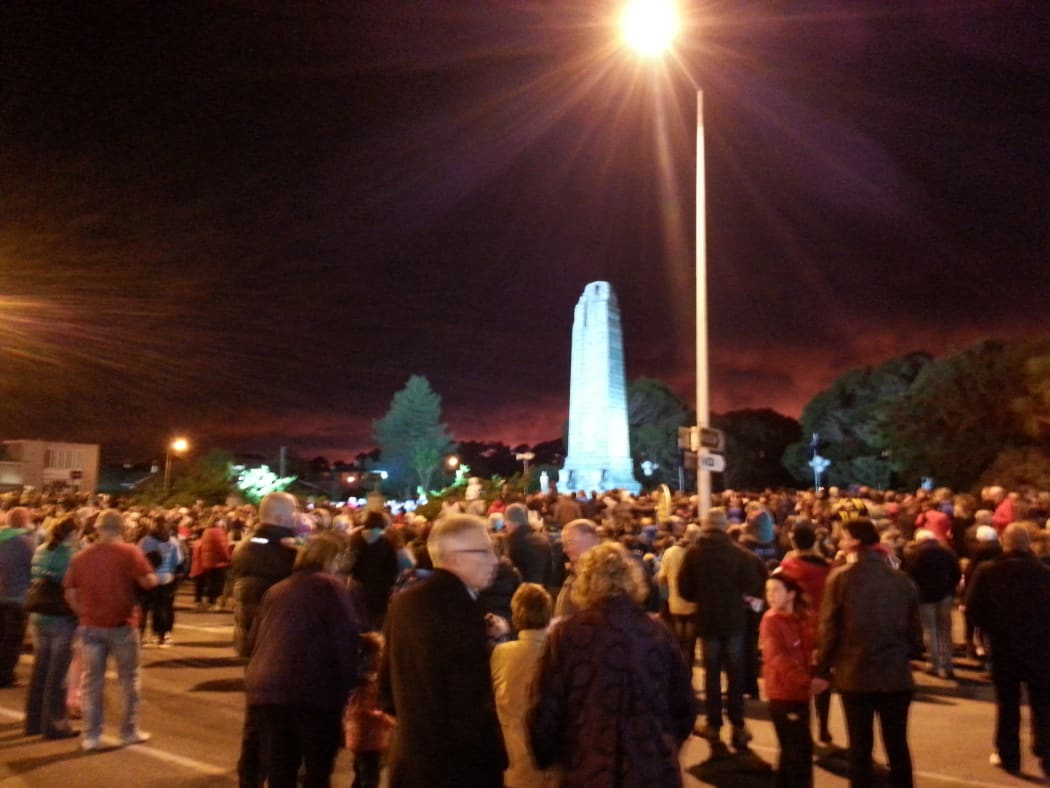
Crowds gather for the dawn service at the cenotaph in Invercargill. Photo: Malcolm Gayfer

Photo: RNZ / Ian Telfer
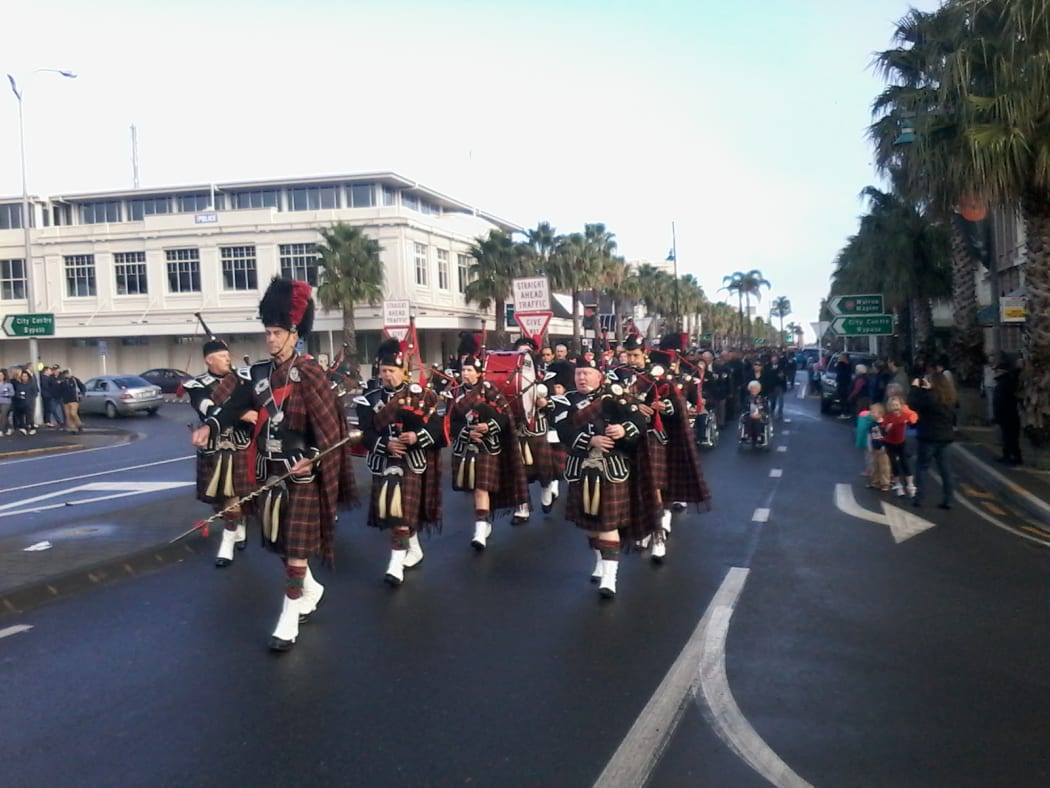
A band marches in Gisborne to mark Anzac Day. Photo: RNZ / Murray Robertson
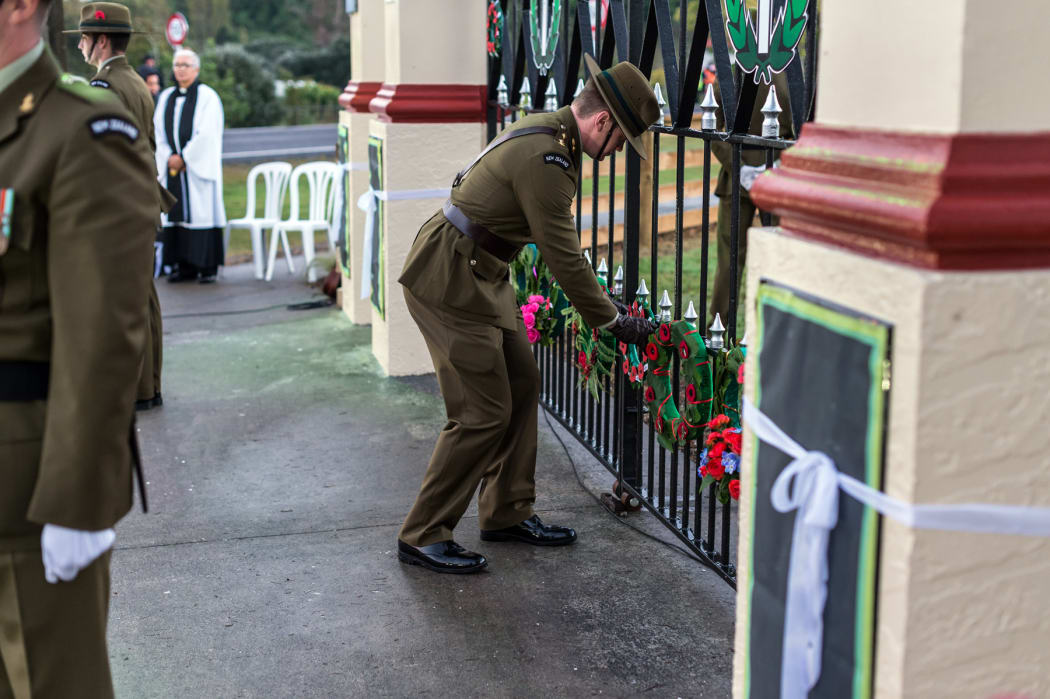
A soldier lays a wreath at Tolaga Bay. Photo: NZDF
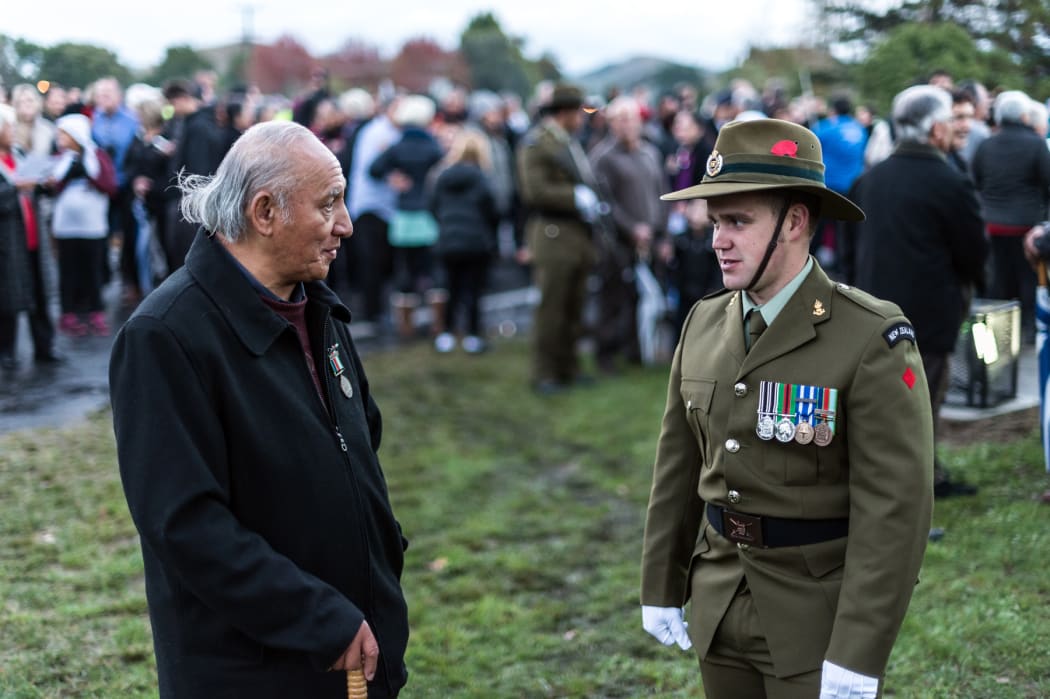
Participants share a moment following the dawn service at Tolaga Bay. Photo: NZDF
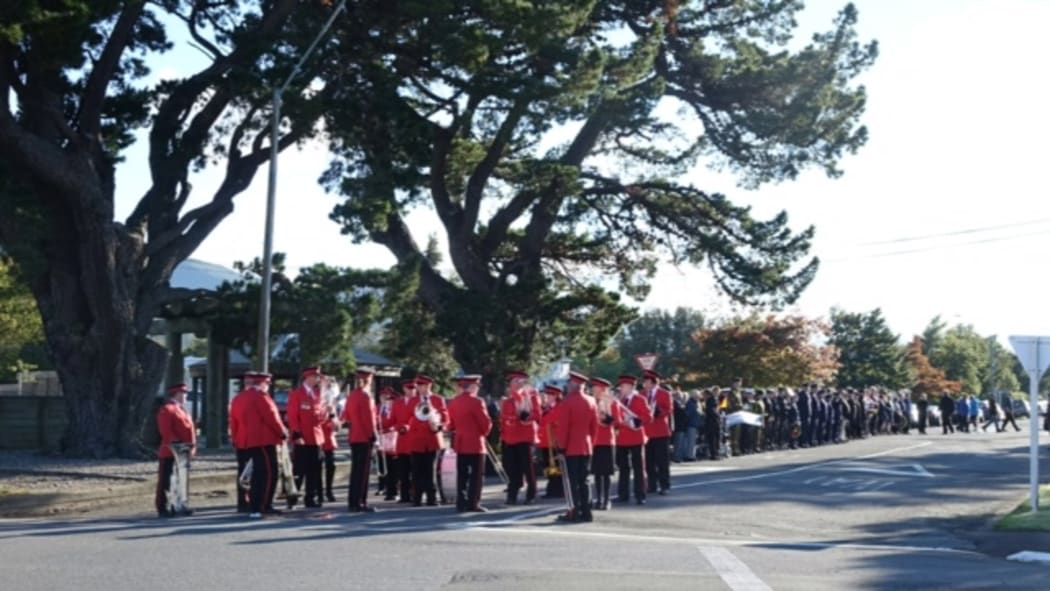
Hundreds gathered in Featherston in the Wairarapa for the dawn service. Photo: RNZ / Gael Woods
